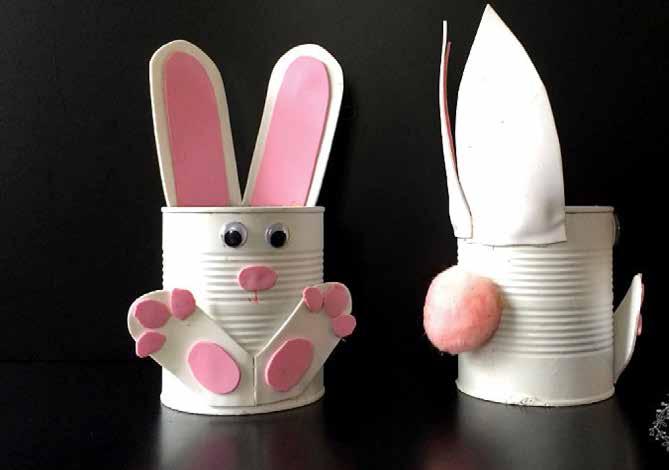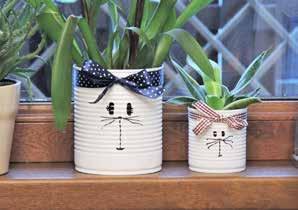
5 minute read
A Day in the life of an Asset Management Officer
If you live in Cardiff and have had any work carried out on your home recently, you may already know Rhys Charles. As one of our team of Asset Management Officers working across Wales, Rhys and his colleagues are the link between residents and the work that is carried out on their homes and around our schemes. From new kitchen and bathroom installations, cutting grass to all the checks that keep residents safe, Rhys and his colleagues play a part. Rhys says: “An Asset Management Officer is responsible for everything that goes on in the area they cover, so we get involved in a wide variety of tasks. “Typically, we carry out all safety checks on our homes to make sure residents are kept safe. For example, we carry out all the fire, water and safety checks, we monitor the condition of our properties and inspect reports of faults in residents’ homes. “I also manage the cleaners at our schemes and the teams that look after the communal gardens and grounds.” “If a resident is having a new kitchen or bathroom fitted, I would work with our maintenance teams and contractors before work begins starting with consulting residents about any help they may need while work is underway and afterwards. “We tend to be the go-to person for all departments and residents alike. We work very closely with our colleagues in housing, compliance and repairs should any issues arise. I also work with local police to make sure residents are safe if there are reports of criminal activities at any of our schemes.” During the first lockdown, when many services were carried out remotely, Rhys and other AMOs continued carrying out their vital safety checks at schemes where they noticed an increase in loneliness among residents. “I get satisfaction in my job when I have helped someone out. Just taking the time to have a chat with some residents may mean a lot to them, especially if they have no one else,” Rhys explains. “With the help of my housing colleagues, grounds maintenance and cleaning staff, we do make a difference to people’s lives, and can be the difference between preventing isolation and loneliness. “I enjoy the variety of my job. Every day I have something different to do and I wouldn’t want it any other way.”

Advertisement

Tomato & Chickpea Curry
This supper recipe is not only simple to make, it’s also cheap too, using mostly tinned ingredients from your store cupboard.
Serves 4
Ingredients:

• 2tsp olive oil • 2 cloves garlic, crushed • 2 small red onions, 1 chopped, 1 sliced • ½ jar tikka masala curry paste • 400g tin plum tomatoes in tomato juice • 400g tin chickpeas, drained and rinsed • 2tbsp desiccated coconut (optional) • Fresh coriander, chopped (optional) • 2 bay leaves • 4 rosemary sprigs, ripped
Method:
1. Heat the oil in a large pan; add the chopped onion and cook for approx 4 minutes or until they soften.
2. Add the crushed garlic and cook for another 1 minute.
3. Stir in the tikka masala curry paste and cook for another 1 minute.
4. Add the tin tomatoes and the chickpeas, and stir. 5. Add 150ml boiling water and simmer for 8 minutes or until slightly thickened.
6. At this point you could add some fresh baby spinach and stir until it wilts.
7. Top with the sliced onions, desiccated coconut and fresh chopped coriander.
8. Serve with rice.
Make a cute spring bunny planter
Looking for a quick and easy craft that combines recycling and gardening?
These cute bunny planters will use up some of the things you would throw away.
What you will need
• 1 empty tin can (thoroughly washed and cleaned with labels removed and no sharp edges) • 2 pieces of white felt or cardboard (measuring approx 9cm x 12cm) • 2 pieces of pink felt or cardboard (measuring approx 9cm x 12cm) • white paint • 2 large googly eyes • 1 large white or pink pom pom • permanent felt marker pen e.g. Sharpie • glue • pot plant for inside can

Method
In a well-ventilated area, spray or paint the can white and allow to dry completely. To make the ears take a piece of white felt, fold it in half and trace a bunny ear shape onto it using up the entire half of the felt. Carefully cut the ears out so you will have two ears. If you don’t have felt you could use paper or cardboard. Take the pink felt, fold in half and trace a smaller bunny ear onto it to make the inner ear. Glue the smaller pink ears onto the larger white ears and set aside. To make the feet take another piece of white felt, fold it in half and trace a bunny foot onto it. The top part is rounded and the bottom part is cut at a 90-degree angle to help the feet to line up properly. Cut the feet out and when you are done, you will have two white feet. Using a pink piece of felt, fold it in half and trace 3 toes and 1 sole onto it to lay on top of the white feet. Carefully cut the pink parts out so you have 6 toes and 2 soles and glue them onto the white feet. You will also need to cut out a bunny nose from the pink piece of felt. When the painted can is completely dry, glue the bunny ears and pom-pom tail to the back of the planter. Glue googly eyes and a felt nose on the front and use a marker pen to draw your bunny’s mouth. If you don’t have any felt you could simply draw a bunny face onto your planter and decorate with a piece of ribbon or fabric. When the glue is dry – your planter is ready to hold your potted plant.






